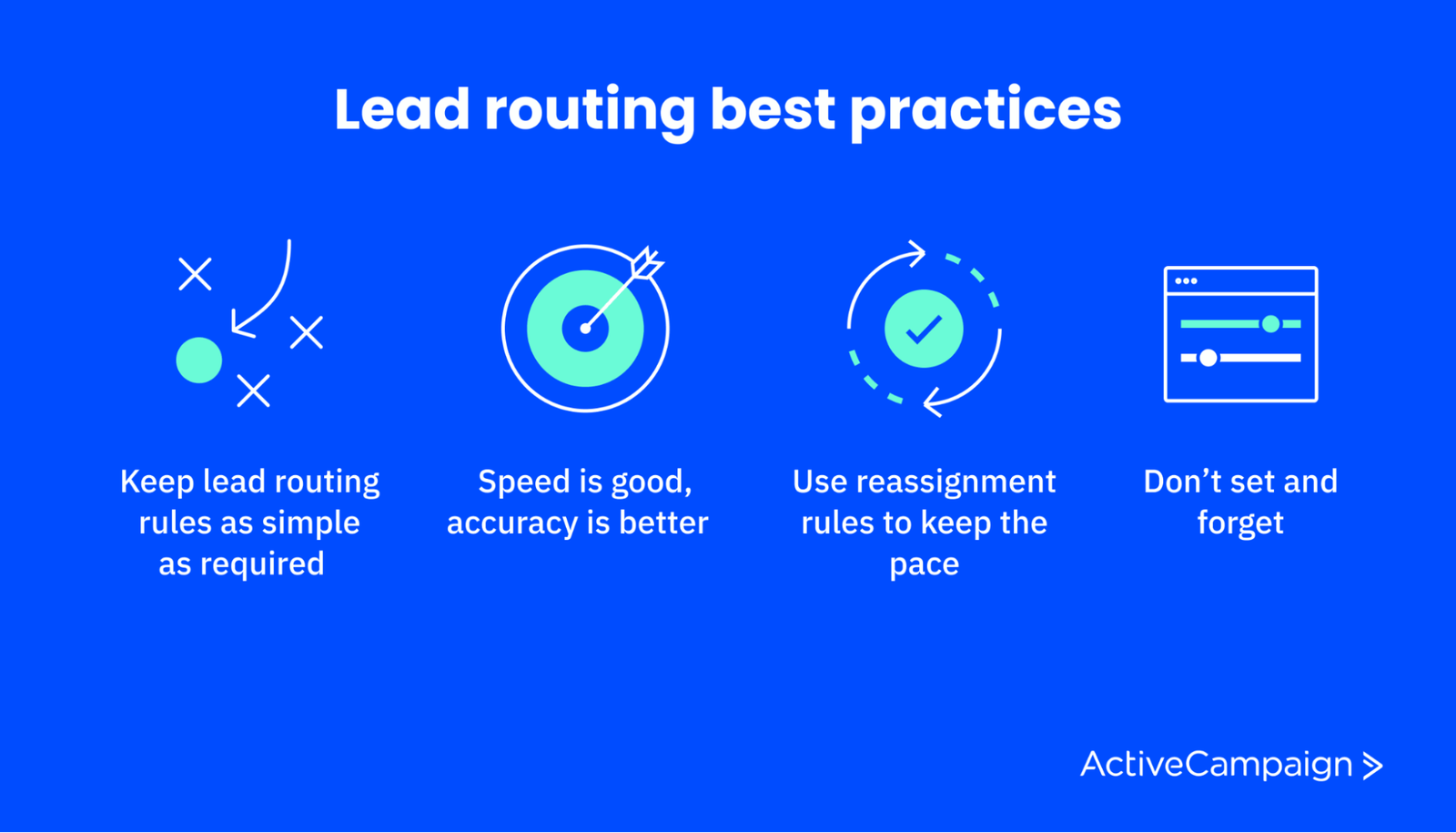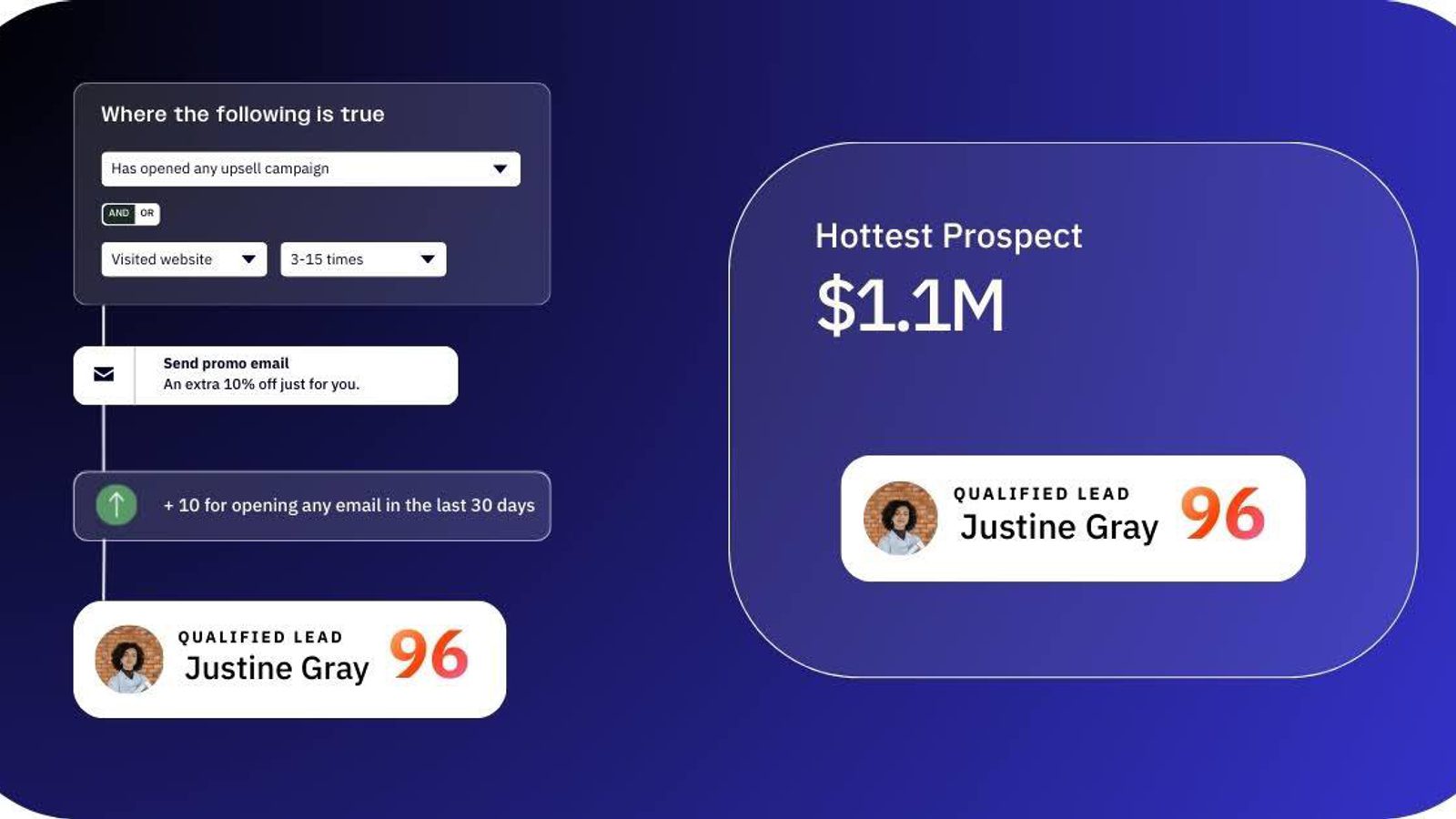Everyone talks about the profound benefits of generating leads through inbound marketing.
But nobody mentions how you’re actually supposed to manage those leads as they come pouring in.
Who is responsible for lead management? How do we know which salesperson should jump in? And how can we prevent reps from grabbing all the new leads but never nurturing them properly?
All of this is answered through a process called lead routing—a set of rules in your CRM or sales engagement platform that automatically pushes new leads to sales reps based on your internal guidelines.
In this article, we’ll dive deep into lead routing, explain why it’s such a critical need for growing teams, and discuss 6 common options for lead routing rules.
Table of Contents
What is lead routing?
Lead routing is the process of assigning new potential customers (referred to as prospects or, in this case, leads) to suitable sales reps.

“Suitable” here is a pretty subjective term. There are several ways we can define it, which will impact how leads are routed. We’re going to discuss 6 common options for lead routing shortly.
For now, let’s look at an example to illustrate how lead routing works.
A prospective customer has been browsing your website, perhaps reading some of your blog content and diving deep into product explainer videos. They feel like your product might be a good fit to solve their challenges, so they decide to book a demo.
They’ll need to input their contact details into some kind of lead form, and that information is then loaded into your CRM or sales engagement platform.
What happens next (that is, how your sales process begins) depends on your lead routing rules.
Maybe you have a round-robin assignment approach, so leads are distributed evenly. Or perhaps you use an account-based lead routing process, meaning new leads go to specific reps based on account details (like company size).
In any case, your lead routing rules dictate which sales rep gets assigned to speak with that customer.
Why is lead routing so important for sales and marketing teams?
Lead routing is crucial for a number of reasons.
First of all, speed to lead (how quickly you respond to a new prospect) is crucial for capturing sales. In B2B markets, the first company to respond can be the biggest purchase driver.
There are a few other reasons, however:
- Enterprise company structures: If a lead comes in for a business owned by a parent company you already do business with, then the same sales rep should handle both accounts.
- Territory planning: New leads for Chicago should be assigned to the sales agent responsible for that territory, for example.
- Expertise (use cases): Many products serve multiple industries and use cases. You can improve the customer experience (and your likelihood of closing that deal) by routing leads to a rep with expertise in that specific area.
6 options for lead routing rules
How you choose to route leads to reps is up to you. Some sales organizations focus on territory assignment; others prioritize agent availability.
More complex lead routing rules can account for both.

Here, we’ll discuss 6 of the most common options for lead routing.
1. Lead routing by territory
Territory-based lead routing is a great option for sales teams targeting multiple geographies but have specific reps assigned to specific areas.
This one’s pretty simple:
When a lead comes in from a certain territory like Europe, the Middle East, or Africa (EMEA), it gets routed to the person responsible for that region.
2. Lead routing by company hierarchy
Hierarchical routing is a little more complicated. It relies heavily on how robust your firmographic data is and is often used by sales teams targeting enterprise-level companies.
Imagine, for instance, that 1 of your current customers is Marvel Studios. A new lead comes through, and it’s ESPN.
Both companies are owned by the same parent company: Walt Disney Company. So, the ESPN lead would be assigned to the sales rep (or customer success manager) who is already working on the Marvel deal.
3. Lead routing by use case
Use case routing helps you direct qualified leads through to reps who are experts in the field.
For instance, we (ActiveCampaign) offer a few different products.

A lead that comes through for our sales engagement product would go to an expert in that field, and 1 for transactional emails would go to another.
Or, we could create lead assignment rules based on industry, with leads for real estate agents going to a sales rep with industry expertise, and so forth.
4. Lead routing by deal value
Another way to route new inbound leads to sales reps is based on the value of the potential deal.
Let’s say 1 of your form fields asks the potential customer to specify how many seats they’d need if they started using your product.
You could then use this data (and the plan tier they’ve said they’re interested in) to calculate an approximate deal value and then assign higher value leads to those with more experience, maximizing your ability to close new revenue.
5. Lead routing by lead score
Lead scoring is a popular method for building a priority list for serving inbound leads.
New leads might receive points for aspects such as:
- Company size
- Engagement with specific content
- Alignment with buyer persona requirements
Then, your routing process would be to assign leads based on their score. You might, for instance, route leads with higher scores to more practiced reps.
Or, perhaps you’ll route the highest-scored leads to the next available agent to improve your response time.
6. Lead routing by availability
The last option is to route leads by availability. That is, who is available next?
Simple.
Lead routing best practices

To keep things as clean and easy to manage as possible, follow these 4 best practices when setting up a lead assignment process.
1. Keep lead routing rules as simple as required
Lead routing and assignment rules can get pretty complex. Sometimes (like in the case of enterprise sales approaches with complex territory and account guidelines), this is necessary.
More often than not, however, a simple lead routing approach, such as an availability-based assignment, is a better move.
Don’t get more complicated than you need to.
2. Speed is good, accuracy is better
Availability-based lead routing is ideal for improving speed to lead, but you shouldn’t sacrifice quality conversations for lead response times.
For instance, if you serve multiple industries and have sales reps with expertise in each, you should consider routing leads based on this factor first and availability second.
3. Use reassignment rules to keep the pace
Leads can be routed more than once, and 1 wise tactic here is to reroute leads if they aren’t followed up within a reasonable timeframe.
Say, for instance, you have a round-robin lead assignment process.
But if a new lead doesn’t receive a response within 2 hours, it gets rerouted to the next available rep.
This is crucial for improving the customer experience, driving response times, and holding sales reps accountable.
4. Don’t set and forget
Lastly, don’t make the mistake of setting lead routing rules once and never looking at them again.
Organizations grow, sales processes develop, and customer needs change. Review your lead routing process regularly to ensure it's still relevant to your sales approach.
Lead Routing Made Easy
Get started with automated lead routing software today with a 14-day free trial of ActiveCampaign.
Frequently asked questions
What is a lead router?
A lead router is a feature in CRMs and sales engagement platforms. Its job is to assign incoming leads to sales reps based on the rules you provide. For instance, you might route high-value leads to 1 rep and lower-value leads to a newer agent.
Who owns lead routing?
Generally speaking, the sales department owns lead routing.
How do you allocate leads?
There are several ways to route and allocate leads. The most common options are:
- Lead routing by territory
- Lead routing by company hierarchy
- Lead routing by use case
- Lead routing by deal value
- Lead routing by lead score
- Lead routing by availability
Conclusion
So, now you’ve got your lead routing rules set up, so new prospects get through to an appropriate rep within a timely manner.
What’s next?
You’re going to need a sales lead management process. To learn more, check out our dedicated guide on the topic.








